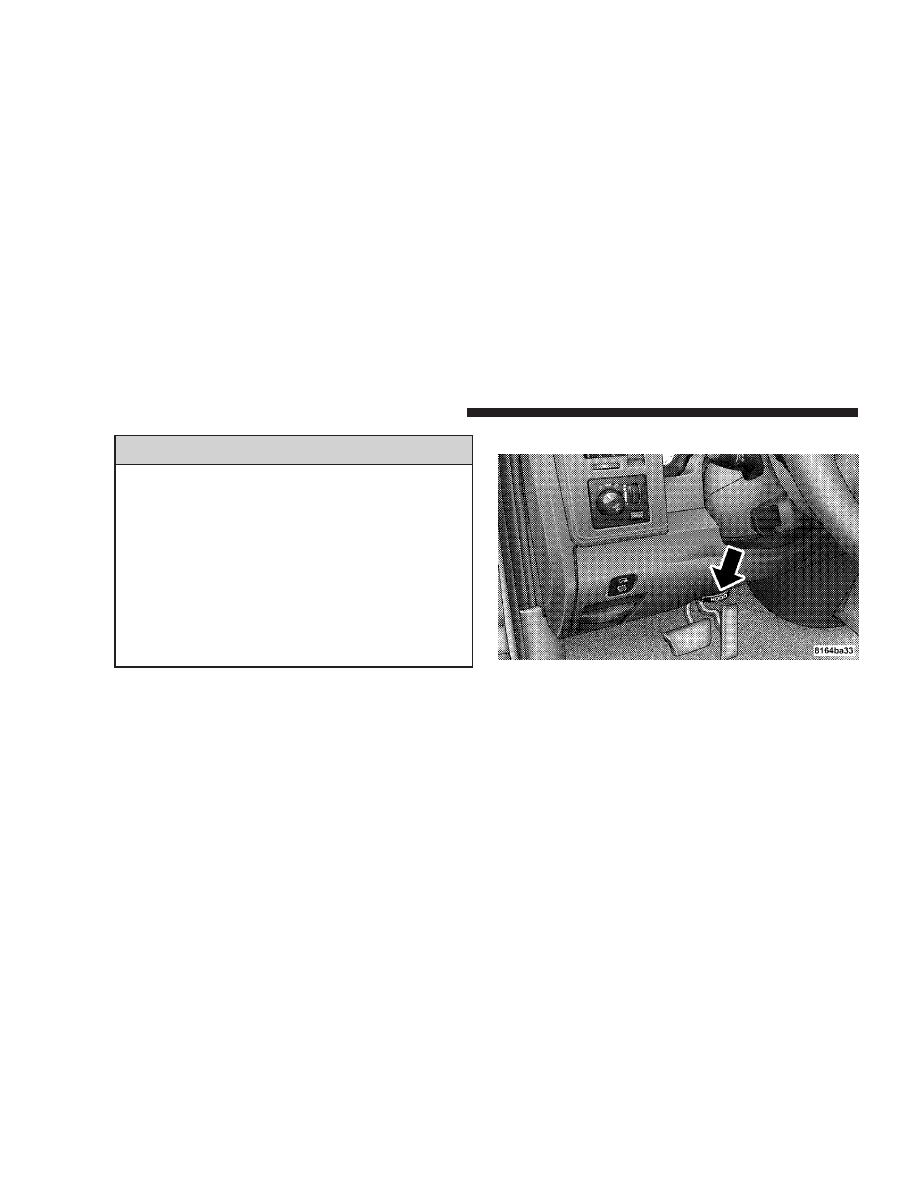Dodge 5500 Chassis Cab (2008 year). Instruction - part 8

WARNING!
Persons who are unable to feel pain to the skin
because of advanced age, chronic illness, diabetes,
spinal cord injury, medication, alcohol use, exhaus-
tion or other physical condition must exercise care
when using the seat heater. It may cause burns even
at low temperatures, especially if used for long
periods of time.
Do not place anything on the seat that insulates
against heat, such as a blanket or cushion. This may
cause the seat heater to overheat.
TO OPEN AND CLOSE THE HOOD
To open the hood, two latches must be released. First pull
the hood release lever located below the steering wheel at
the base of the instrument panel. Once the hood is
released you must reach into the opening beneath the
center of the grille and push up the latch to release the
safety catch before raising the hood.
Hood Release Lever
120
UNDERSTANDING THE FEATURES OF YOUR VEHICLE